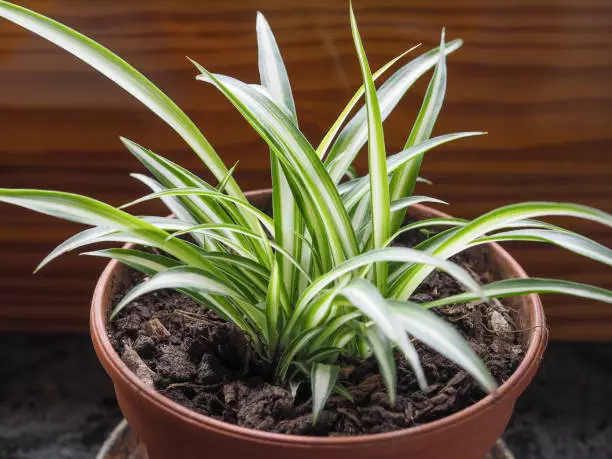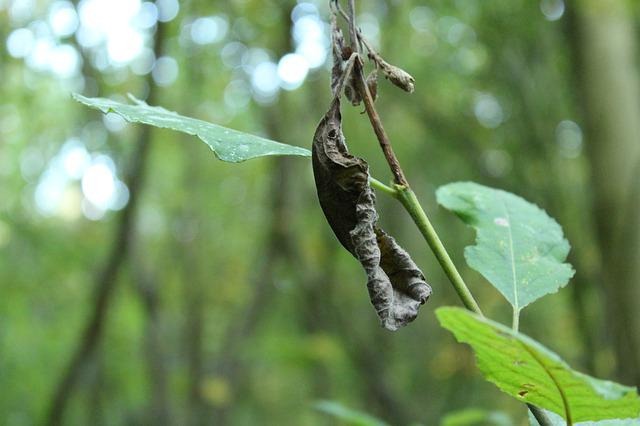Citrus diseases are a significant problem in the citrus industry, causing economic losses and reducing crop yield. Identifying citrus diseases accurately and quickly is crucial for effective disease management. Traditional methods of disease identification rely on visual inspection by experts, which can be time-consuming and subjective.
Advancements in computer vision technology have led to the development of automated citrus disease identification systems. These systems use image processing techniques and machine learning algorithms to analyze images of citrus leaves and identify disease symptoms accurately. Several studies have proposed different approaches to citrus disease identification, including color texture features, deep learning, and AMSR algorithms.
Automated citrus disease identification systems have the potential to revolutionize the citrus industry by providing quick and accurate disease diagnosis, allowing for early intervention and disease management. These systems can also reduce the need for expert visual inspection, saving time and money. However, further research is needed to develop more accurate and robust disease identification systems that can handle different lighting conditions and environmental factors.
Understanding Citrus Diseases
Citrus trees are susceptible to a variety of diseases that can significantly reduce their yield and quality. Identifying and treating these diseases is crucial for maintaining healthy citrus crops. In this section, we will provide an overview of citrus diseases and their identification.
Citrus Diseases
There are several citrus diseases that growers need to be aware of, including:
- Citrus Canker: A bacterial disease that causes lesions on leaves, stems, and fruit.
- Huanglongbing (HLB): A bacterial disease that causes stunted growth, yellowing leaves, and bitter fruit.
- Citrus Greening: A bacterial disease that causes yellowing leaves, premature fruit drop, and bitter fruit.
- Citrus Tristeza Virus (CTV): A viral disease that can cause stunted growth, yellowing leaves, and reduced fruit quality.
- Phytophthora Root Rot: A fungal disease that can cause root rot and tree decline.
Citrus Disease Identification
Proper identification of citrus diseases is essential for effective treatment. Here are some common symptoms of citrus diseases:
- Yellowing leaves
- Stunted growth
- Lesions on leaves, stems, and fruit
- Premature fruit drop
- Bitter fruit
- Root rot
In addition to visual symptoms, growers can also use laboratory tests to confirm the presence of a disease. For example, DNA tests can be used to detect the presence of the bacteria that causes HLB.
It is important to note that some citrus diseases, such as HLB, can have a long incubation period before symptoms become apparent. Therefore, regular monitoring and testing of citrus trees is essential for early detection and treatment.
In conclusion, understanding citrus diseases and their identification is crucial for maintaining healthy citrus crops. Growers should be aware of common symptoms and use laboratory tests for confirmation. Regular monitoring and testing can help detect diseases early and prevent significant crop losses.
Common Citrus Diseases
Citrus Canker
Citrus canker is a bacterial disease that affects the leaves, stems, and fruit of citrus trees. It causes lesions on the leaves and fruit, which can lead to defoliation and poor fruit quality. The disease is highly contagious and can spread rapidly through wind, rain, and human activity.
Citrus Greening
Citrus greening, also known as Huanglongbing (HLB), is a bacterial disease that affects all citrus species. It is spread by a tiny insect called the Asian citrus psyllid. The disease causes the fruit to become misshapen and bitter, and eventually kills the tree.
Greasy Spot
Greasy spot is a fungal disease that affects citrus trees in humid and wet conditions. It causes yellowish-brown spots on the leaves, which can lead to premature defoliation. The disease can also affect the fruit, causing it to become discolored and unmarketable.
Citrus Black Spot
Citrus black spot is a fungal disease that affects the fruit of citrus trees. It causes dark, sunken lesions on the fruit, which can lead to premature drop and reduced yield. The disease is spread by wind and rain, and can be difficult to control.
Brown Rot
Brown rot is a fungal disease that affects the fruit of citrus trees. It causes the fruit to become soft and rot and can lead to significant yield losses. The disease is spread by rain and wind and can be controlled through proper sanitation and fungicide applications.
Melanose
Melanose is a fungal disease that affects the leaves, twigs, and fruit of citrus trees. It causes brownish-black lesions on the leaves and fruit, which can lead to defoliation and reduced yield. The disease is spread by rain and wind and can be controlled through proper sanitation and fungicide applications.
Stubborn Disease
Stubborn disease is a bacterial disease that affects citrus trees. It causes the fruit to become small and misshapen and can lead to significant yield losses. The disease is spread by the citrus psyllid and can be difficult to control.
Botrytis Rot
Botrytis rot is a fungal disease that affects the fruit of citrus trees. It causes the fruit to become soft and rot, and can lead to significant yield losses. The disease is spread by rain and wind, and can be controlled through proper sanitation and fungicide applications.
Anthracnose
Anthracnose is a fungal disease that affects the fruit of citrus trees. It causes the fruit to become discolored and sunken and can lead to significant yield losses. The disease is spread by rain and wind and can be controlled through proper sanitation and fungicide applications.
Bacterial Blast
Bacterial blast is a bacterial disease that affects the leaves and fruit of citrus trees. It causes lesions on the leaves and fruit, which can lead to defoliation and poor fruit quality. The disease is spread by wind, rain, and human activity.
Hard Spot
Hard spot is a fungal disease that affects the fruit of citrus trees. It causes hard, corky spots on the fruit, which can lead to reduced yield and poor fruit quality. The disease is spread by rain and wind and can be controlled through proper sanitation and fungicide applications.
Alternaria Brown Spot
Alternaria brown spot is a fungal disease that affects the leaves and fruit of citrus trees. It causes brownish-black spots on the leaves and fruit, which can lead to defoliation and reduced yield. The disease is spread by rain and wind, and can be controlled through proper sanitation and fungicide applications.
Identifying Symptoms
Leaf Symptoms
Citrus leaves are a good indicator of the health of the plant. Yellowing or discoloration of the leaves is a common symptom of citrus diseases. The yellowing may be accompanied by a yellow halo around the affected area. Other leaf symptoms include:
- Cracked or distorted leaves
- Slightly raised lesions
- Light brown spots
Stem Symptoms
Stem symptoms can be an indication of a more serious disease in citrus plants. The stem may appear wilted, withered, or discolored. In some cases, the stem may develop lesions or cracks. It is important to monitor the stem of the plant regularly for any changes.
Fruit Symptoms
Fruit symptoms are often the most visible signs of citrus diseases. The fruit may appear misshapen or discolored. In some cases, the fruit may have a yellow halo around the affected area. Other fruit symptoms include:
- Cracked or distorted fruit
- Slightly raised lesions
- Light brown spots
It is important to note that different citrus diseases can have similar symptoms. Therefore, it is important to consult with a professional or use a reliable diagnostic tool to identify the specific disease affecting the plant.
Pests and Citrus Diseases
Aphids
Aphids are small, soft-bodied insects that can cause damage to citrus trees by feeding on the sap of the leaves, stems, and fruit. They can also transmit viruses that can cause diseases in citrus trees. Some common types of aphids that affect citrus trees include the black citrus aphid, the cotton aphid, and the green peach aphid.
Whiteflies
Whiteflies are small, winged insects that feed on the sap of citrus trees. They can cause damage to the leaves and fruit of the tree, and can also transmit viruses that can cause diseases in citrus trees. Some common types of whiteflies that affect citrus trees include the citrus whitefly and the silverleaf whitefly.
Citrus Bud Mite
The citrus bud mite is a tiny, microscopic pest that can cause damage to the buds and flowers of citrus trees. They can cause deformities in the fruit and can also transmit viruses that can cause diseases in citrus trees.
Brown Soft Scale
Brown soft scale is a type of insect that can cause damage to the bark and leaves of citrus trees. They can also transmit viruses that can cause diseases in citrus trees. Brown soft scale can be difficult to control, and may require multiple treatments to eliminate.
Citrus Thrips
Citrus thrips are small, winged insects that can cause damage to the leaves and fruit of citrus trees. They can also transmit viruses that can cause diseases in citrus trees. Citrus thrips can be difficult to control and may require multiple treatments to eliminate.
Citrus Whitefly
The citrus whitefly is a small, winged insect that feeds on the sap of citrus trees. They can cause damage to the leaves and fruit of the tree, and can also transmit viruses that can cause diseases in citrus trees. Citrus whiteflies can be difficult to control and may require multiple treatments to eliminate.
In order to prevent and control pests and diseases in citrus trees, it is important to monitor the trees regularly and take action at the first sign of a problem. This may include using insecticides, pruning infected branches, and removing infected fruit from the tree. It is also important to maintain good cultural practices, such as proper irrigation and fertilization, to keep the trees healthy and resistant to pests and diseases.
Citrus Disease Management
Disease Control
Preventing and controlling diseases in citrus trees is essential for maintaining their health and productivity. Proper disease control measures must be taken, including early detection of diseases in citrus trees. Some effective ways to control diseases in citrus trees include:
- Planting disease-resistant varieties
- Maintaining proper tree nutrition and irrigation
- Removing and destroying infected plant materials
- Regularly inspecting trees for signs of disease
- Using proper pruning techniques to promote air circulation
Treatment
If a citrus tree is infected with a disease, it is important to treat it as soon as possible to prevent the disease from spreading. Some effective treatments for citrus diseases include:
- Applying fungicides: Fungicides can be used to control and prevent the spread of fungal diseases in citrus trees. Liquid copper fungicide is one of the most commonly used fungicides for citrus trees.
- Removing infected plant parts: Infected plant parts should be removed and destroyed to prevent the disease from spreading.
- Maintaining proper tree nutrition: Proper nutrition can help citrus trees resist diseases and recover from infections.
It is important to note that not all diseases can be treated with fungicides, and some diseases may require more aggressive management techniques, such as removing and destroying infected trees. It is always best to consult with a professional arborist or horticulturist to determine the best course of action for managing citrus diseases.
Impact of Environmental Factors
Climate Conditions
Citrus trees are sensitive to extreme temperatures and climate conditions. Subtropical climates with mild winters and hot summers are ideal for citrus growth. Frost and hail damage can cause significant harm to citrus trees, resulting in reduced fruit yield and quality. Sunburn is another common issue that can occur due to excessive exposure to sunlight, especially during hot summer days.
Nutrient Deficiency
Citrus trees require a balanced supply of nutrients to grow healthy and produce high-quality fruit. Nitrogen deficiency can result in stunted growth and reduced fruit yield, while potassium deficiency can lead to reduced fruit size and quality. Phytotoxicity caused by excessive use of pesticides and fertilizers can also harm citrus trees and reduce their productivity.
In conclusion, environmental factors such as climate conditions and nutrient deficiency can have a significant impact on citrus trees’ growth and productivity. It is important to ensure that citrus trees are grown in suitable climatic conditions and provided with adequate nutrients to minimize the risk of damage and improve their fruit yield and quality.
| Environmental Factors | Impact on Citrus Trees |
|---|---|
| Sunburn | Reduced fruit yield and quality |
| Frost | Harm to citrus trees |
| Hail damage | Reduced fruit yield and quality |
| Phytotoxicity | Reduced productivity |
| Nitrogen deficiency | Stunted growth and reduced fruit yield |
| Potassium deficiency | Reduced fruit size and quality |
Citrus Diseases in Different Regions
California
California is a major citrus-producing region in the United States, with over 80% of the country’s citrus crop grown in the state. Citrus diseases are a significant concern for California citrus growers, as they can cause significant damage to crops and reduce yields. The most common citrus diseases in California include:
- Citrus greening disease (also known as Huanglongbing or HLB)
- Citrus black spot
- Citrus canker
- Citrus tristeza virus
Efforts are underway in California to manage and control these diseases through a combination of cultural and chemical methods.
Florida
Florida is another major citrus-producing region in the United States, with a significant number of citrus groves located throughout the state. Like California, Florida also faces a number of citrus diseases that can have a significant impact on crop yields. Some of the most common citrus diseases in Florida include:
- Citrus greening disease (HLB)
- Citrus canker
- Citrus black spot
- Citrus tristeza virus
Florida has implemented a number of strategies to manage and control these diseases, including the use of disease-resistant citrus varieties and the implementation of strict quarantine measures.
China
China is a major producer of citrus fruits, with a significant number of citrus groves located throughout the country. Citrus diseases are a significant concern for Chinese citrus growers, as they can cause significant damage to crops and reduce yields. Some of the most common citrus diseases in China include:
- Citrus greening disease (HLB)
- Citrus canker
- Citrus black spot
- Citrus tristeza virus
Efforts are underway in China to manage and control these diseases through a combination of cultural and chemical methods.
Overall, citrus diseases are a significant concern for citrus growers in California, Florida, and China, as they can cause significant damage to crops and reduce yields. However, through the implementation of effective disease management strategies, it is possible to control and manage these diseases and ensure the continued success of the citrus industry in these regions.
Prevention and Control Measures
Prevention and control measures are essential to manage citrus diseases effectively. Integrated Pest Management (IPM) is a holistic approach to prevent and control citrus diseases. IPM involves a combination of cultural, biological, and chemical control methods to manage pests and diseases.
One of the most crucial steps in preventing citrus diseases is to use healthy nursery stock. It is essential to purchase citrus trees from reputable nurseries that follow strict sanitation and disease management practices. It is also crucial to inspect the trees before planting to ensure that they are free from any visible signs of disease.
Cultural practices such as pruning, weed control, and irrigation management can also help prevent citrus diseases. Pruning can improve air circulation and sunlight penetration, reducing the risk of disease development. Weed control can help reduce the number of pests that can transmit diseases. Irrigation management can help prevent water stress, which can weaken trees and make them more susceptible to diseases.
Biological control methods such as the use of beneficial insects and microorganisms can also be effective in preventing and controlling citrus diseases. Beneficial insects such as ladybugs and lacewings can help control pests that transmit diseases. Microorganisms such as Trichoderma and Bacillus can help suppress disease-causing pathogens.
Chemical control methods such as the use of fungicides and bactericides can also be used to prevent and control citrus diseases. However, it is essential to use these chemicals judiciously and follow all label instructions to prevent the development of resistance and reduce the risk of environmental contamination.
In conclusion, prevention and control measures are crucial to managing citrus diseases effectively. IPM is a holistic approach that involves a combination of cultural, biological, and chemical control methods. Using healthy nursery stock, cultural practices, biological control methods, and judicious use of chemical control methods can help prevent and control citrus diseases.
Citrus Disease Impact on Fruit Quality
Citrus diseases have a significant impact on the quality of citrus fruits, affecting both mature and fresh fruit. The presence of diseases can lead to premature fruit drop, reducing the yield and quality of the harvest.
One of the most common citrus diseases is black spot, which causes dark lesions on the fruit’s surface, affecting its appearance and making it less desirable for consumers. Other diseases, such as scab and anthracnose, can also cause blemishes and deformities on the fruit’s surface, further reducing its quality.
In addition to affecting the fruit’s appearance, citrus diseases can also impact its taste and nutritional value. For example, citrus greening disease can cause the fruit to become bitter and less juicy, making it less appealing to consumers.
Furthermore, diseases can also affect the fruit’s maturity, causing it to ripen prematurely or not at all. This can result in a lower-quality fruit that is not suitable for sale or consumption.
Overall, it is essential to identify and manage citrus diseases to maintain the quality and yield of citrus fruit production. By implementing effective disease management strategies, growers can ensure that their crops remain healthy and profitable.
Frequently Asked Questions
What are some common citrus diseases?
Citrus trees are susceptible to various diseases, including citrus canker, citrus greening, citrus black spot, and citrus tristeza virus. These diseases can cause significant damage to citrus crops and result in reduced fruit yield and quality.
What are the symptoms of citrus fungal diseases?
Fungal diseases can cause various symptoms in citrus trees, including leaf spots, yellowing, wilting, and fruit rot. Some common fungal diseases that affect citrus trees include melanose, greasy spot, and anthracnose.
How can I identify citrus tree diseases?
Identifying citrus tree diseases can be challenging, but there are some common symptoms to look out for, such as leaf discoloration, fruit deformities and decay, and twig dieback. If you suspect that your citrus tree is infected, it is best to consult an expert for accurate diagnosis and treatment.
What does citrus blight look like?
Citrus blight is a bacterial disease that affects citrus trees, causing yellowing and wilting of leaves, branch dieback, and fruit drop. The infected trees often have a stunted growth, and the bark may crack or peel off. Citrus blight can be challenging to control, and infected trees may need to be removed to prevent the spread of the disease.
What is the major disease of citrus?
Citrus greening, also known as Huanglongbing (HLB), is one of the most severe diseases of citrus trees. It is caused by a bacterium that is spread by an insect called the Asian citrus psyllid. Citrus greening can cause yellowing and wilting of leaves, stunted growth, and fruit drop. There is no known cure for citrus greening, and infected trees must be removed to prevent the further spread of the disease.
How can I control citrus diseases?
Preventing citrus diseases is the best way to control them. You can do this by maintaining good tree health, practicing good sanitation, and using disease-resistant varieties. If your citrus tree is infected, it is essential to remove the infected parts and dispose of them properly to prevent the spread of the disease. Fungicides and insecticides can also be used to control some citrus diseases, but it is best to consult an expert for proper diagnosis and treatment.



